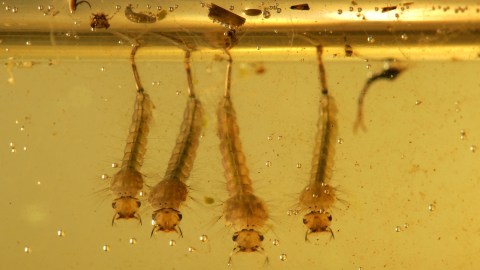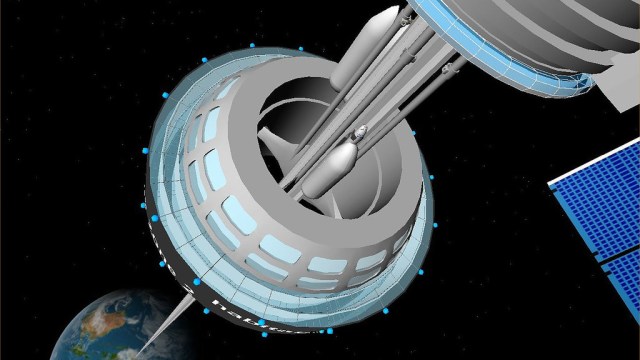Birds have plastic in their bellies via plastic-eating mosquito larvae

Photo credit: David McNew / Getty Images
- A new study suggests that insect larvae that begin life in freshwater could be eating microplastics and retaining them as they mature.
- It comes at a time when public awareness of microplastics in the environment is increasing.
- The discovery suggests that the problem of microplastics in the environment could be worse than we thought.
The problem of microplastics in aquatic environments is increasingly well known. Between the 5.25 trillion pieces of plastic in the ocean that animals are liable to eat, there is a lot of plastic slowly working its way up the food chain.
However, scientists have recently discovered that fish aren’t the only prey animal we need to worry about eating plastic. Mosquito larvae are perfectly capable of eating microplastics and retain the plastic as adults, opening up a new route for the contamination of animals higher up on the food chain.
How did we find this out?
In an experiment to see if insects could stomach plastic, scientists fed mosquito larvae microplastic beads of various sizes. A random group of the larvae were then examined to see how many of the beads remained in the larvae both shortly after eating them and after they had matured into adults.
As might be expected, the larvae where chock full of microplastic beads, with the average larvae having more than 3,000 2-micrometre-wide beads in their bodies. When they tested the same specimens after they matured, the number of beads had declined to an average of 40 beads per mosquito, but this is still a lot of plastic for a small bug that only spends part of its life living in freshwater.
Why does this matter?
The authors summarize their findings by suggesting that an entirely new route for the spread of microplastics may have opened, saying:
Our results have important implications because any aquatic life stage that is able to consume microplastics and transfer them to their terrestrial life stage is a potential vector of microplasticss onto novel aerial and terrestrial habitats. . . . We have demonstrated here that species with aquatic and terrestrial life stages can harbour microplastics through their life history.
The authors also remind us that mosquitoes aren’t the only insect with this kind of life cycle and that this new method of dispersion can also occur with dragonflies and midges, among others. All of these animals are eaten by larger predators, such as birds, which themselves are likely carrying plastic into their bodies currently.If we are going to try and solve the problem of microplastics in the environment, we need to understand how it is moving around and how many creatures might be eating the fragments each day. This study gives us an entirely new area to look into as part of that mission.
Plus, this makes a previously existing problem worse
One of the big concerns people have about microplastics is the risk of it moving up and down the food chain. The authors of this study mention the risks to the food web several times — and the problem of what happens to us when we eat contaminated fish bothers a lot of people. While we’ve only found microplastics in a few bird species that eat seafood, we know that birds have already been eating larger chunks plastic for some time.
It seems like a lot of birds think our plastic waste looks like food. In a study published in 2015, it was found that a majority of seabird species had plastic in them already. The authors predicted that 99 percent of all seabird species will test positive for plastic ingestion by 2050, if current rates of pollution continue.
The discovery that insects, an important source of food for several bird species, probably have microplastics in them already only makes the problem worse. This isn’t even considering the other creatures that eat the bugs such as bats or spiders. If we’re just learning about it now, there is probably already some microplastic moving through these ecosystems already.
Why is this bad for me? I don’t even eat mosquitoes!
If you like eating duck, then you like eating something that eats mosquitoes. The problem with your dining preference is that the food web becoming even more saturated with plastics than it already is — that disregarded plastic is finding its way into us. While we don’t know how much microplastic waste humans can tolerate before becoming ill, the prospect of eating and accruing bits of plastic doesn’t strike most people as a good one.
We are part of a vast web of life filled with interactions that we don’t fully understand. When we pollute the environment that web makes sure that we end up being contaminated too. The results of this study on mosquitoes shows us that the problem of microplastics is even more complicated and pervasive than we thought. If we don’t want to have to solve the problem of what to do when there is too much plastic in a person’s diet, we need to understand how the plastics move through the ecosystem now.





